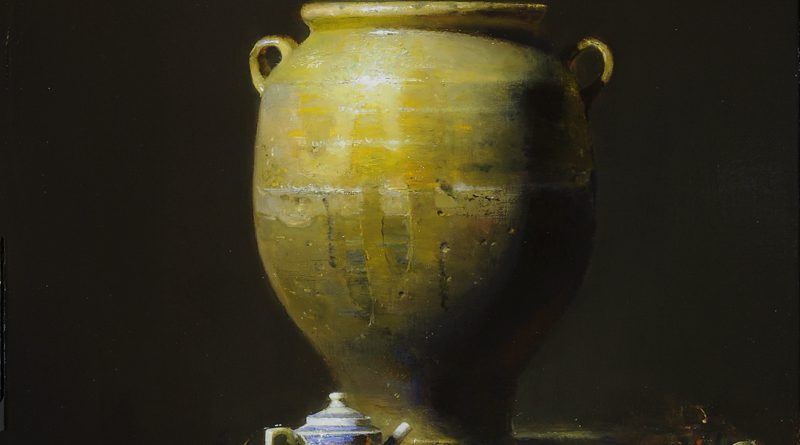Canvas Size Importance When Painting Subject
For today’s blog, Sherrie and Jackie discuss how you choose the canvas size that you want to work on. Watch the video below and/or read the transcription.
Jackie:
For various subjects, it’s something that is really perplexed me all the time. It is that once the subject that I’ve set up, whether it is still life, a landscaping event or portrait, how do you know if it is right for this canvas size? How do I know what would be the optimum canvas size for this setup? You told me that you have a formula for this very subject, so let’s hear the secret.
Sherrie
Okay. Yes, you know, it’s something that I’ve always struggled with also. I’ll do a setup and then trying to figure out what size can canvas to choose to paint it on. But it always felt like I had to almost pick it out of the air, you know, the size canvas and just imagine what the painting would look like on it. So, that was usually how I did it foolproof.
Every so often I’d be wrong. I mean, first of all, you have to decide, is it going to be a horizontal? Is there going to be a vertical? Those kinds of considerations have more to do with like how much space you might want above your subject. If it’s a tall subject, you’re wanting to put it on the canvas vertically, you would want to figure out.
For instance, how high up with a subject should it be. How much space do I want above it? Do I have like a cloth in the background or a rug? And that would also make me want to do it more vertically, even though maybe the objects could fit on a horizontal format, so that’s one consideration.
Once you feel like you kind of have an idea if you want it to be vertical or horizontal and a sense of the size. Then, finally, one day I just thought, I’m just going to measure this main object and I’m just going to see how big it is if it was life-size. So, let me show an example. Let me take the venus statute, can you see that behind me?
Jackie:
Yes
Sherrie:
Okay. So if I went and I measured it and the actual measurement is 17 inches. Okay. So I would know that if I wanted it to be life-sized, then, you know what I will quite often do is take stretcher bars and lay them out in a configurator. Then you come with your, you know, 17 inches and you just kind of imagine it, it’s easier to imagine it in that space, if you know what that is, and if you know that you want to make it smaller than life-size, which is almost always how I paint is smaller than life-size.
And really not over life-size, but life-size or under. And so then it gives you something to work with. Then you have an idea of something you can visualize and how much space that you want around it, because if your main object, if you measure that, or even if it was a grouping of objects, you know, you could take as a whole, you know, a grouping of objects and get some sense of what that whole, you know, grouping how it would measure. And it sounds kind of funny, but it actually works well, you know, just gets you in the ballpark. It gives you a better idea, you know, if you want more space around it and you’re making it smaller, you know, smaller than life-size.
And so you can just play with that, but it gives you something tangible to work from. I know a lot of people use those viewfinders, and they just never were very helpful to me, you know, because I get it in the viewfinder and, you know, in fact, my first teacher even had us, you know, mark it off so you could actually make a translation, you know, from that into real sizes. And it’s like a mechanical thing and it never really worked that well for me, you know, but this is actually something where you start, it gives you something tangible… a tangible number to work from to then visualize your subject on a canvas. That actually works pretty well, you should try it.
Jackie:
Amazing, amazing. Tell me about a figure, how do you… If you’re painting a portrait or figure how do you translate that into the measurement?
Sherrie:
Very good question. Yes, then I would not be measuring the model. Not unless you really wanted to do a huge painting. But usually with a figure portrait, you’re making it quite a bit smaller. I mean, possibly a portrait, you know, but I think that what you want to do is you is first of all, decide if it is going to be horizontal or landscape. Or is it going to be a portrait?
You have the figure if it will be upright, seated. If it is a portrait, it is more than likely you don’t usually do a portrait upright. Although in the artist guild library, you can see one painting that I did of Maria and I did do it in a landscape format.
This is because she had these beautiful dreadlocks. There were in this fun that was going out this direction. So I knew that I wanted to have her horizontal, you know, but most portraits are vertical.
Other Options
And you know, and you can have a reclining nude. So again, that would be in a landscape format. And so mainly the canvas size mainly has more to do with, if you’re doing a figure. Do you want to really go into the head, in which case you would need to have a pretty large canvas in order to do that. There’s much more leeway with portrait and figure in terms of how you design it. With the figure, you’re also trying to figure out how much background is going to be included in it, For instance, if you had a figure and you had a lot of things on the wall like I have behind me, so that you wanted to have as part of the whole composition. Then, you figure that into your painting, in terms of the size of it.
So it might end up being a little bit, you know, taller than you might think for like a reclining nude, if you want to include the background. But that’s a great question, because yes, there, I would not measure it, it’s really still life. Where it’s just been helpful, you know, because instead of just imagining the subject on the canvas, which is what I always did this gives me a little more tangible something to hang on to, to see, well, no, I really want to smaller than life-size, not, you know, bigger than life-size, no. So it’s a good guide.
Jackie:
When you’re doing the landscape painting, how do you pick your… the landscape on to a manageable outdoor seeing versus what size it becomes. Is there any ratio that you generally want to use for landscaping?
For instance, generally I will go outdoors to paint, and paint you know, an eight by ten, study for you know, to let her bring back to my studio, to, you know, a bunch of studies I can make a larger piece. But I always have a problem with translating these studies into what size is the final painting?
Sherrie:
Well I am probably not really the perfect person to be asking about that, just because I don’t do a whole lot of landscape. I have done landscape and the bigger ones that I’ve done, I’ve done from memory.
Jackie: Okay.
Sherrie:
And I came back and did a little sketch and then kind of did it more from memory and use some sort of some photographs for some information to kind of make it richer. So that’s always the problem It’d be like going from a small Marquette in a sculpting to a large monument, you know. There has to be enough information to warrant that size, and I think that unless you have been doing a lot of landscape and you have a lot of trees and clouds and landscape and bushes and flowers and things cataloged in your head, it’s much harder to go from a sketch to a large thing because you can’t give it the richness that it needs to warrant that size.
But that’s a good question because that is necessary. You want to have enough information about that size.
Jackie:
But good. That’s good information to go by. Thank you, Sherry.
Sherrie:
It was fun. Thank you.






Leave a Reply
You must be logged in to post a comment.